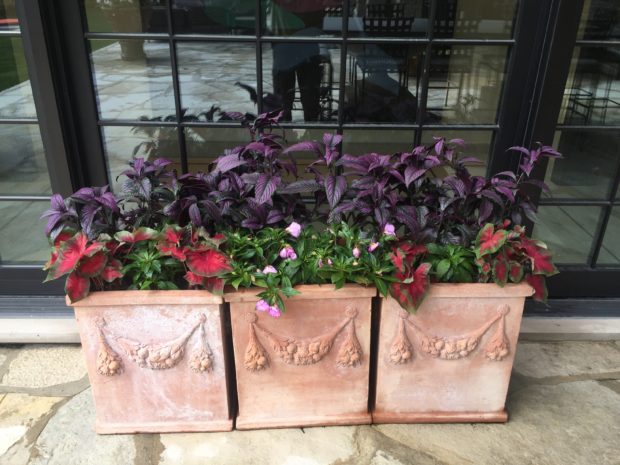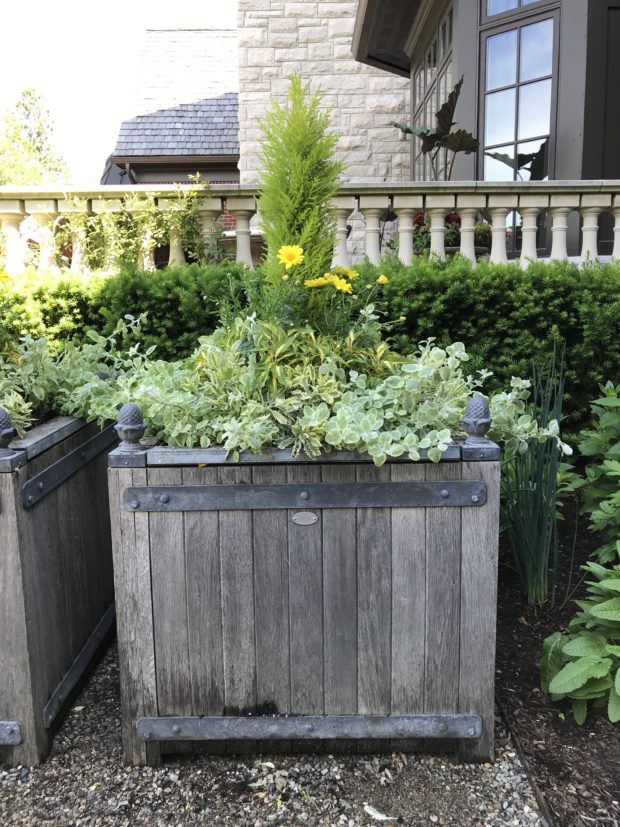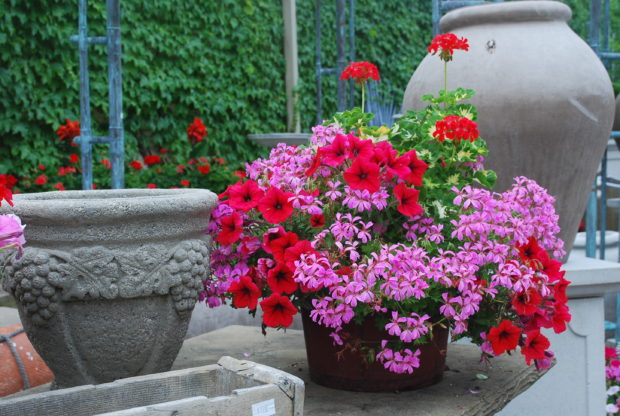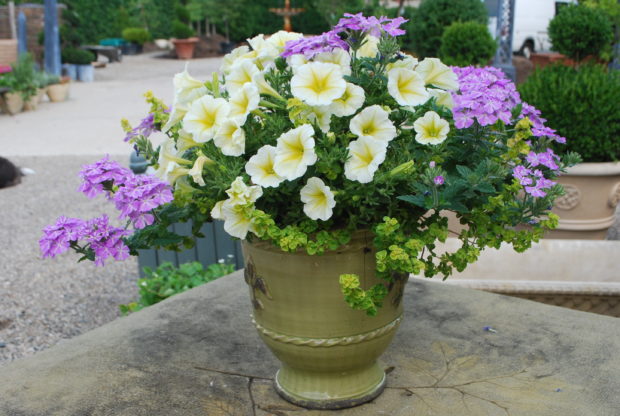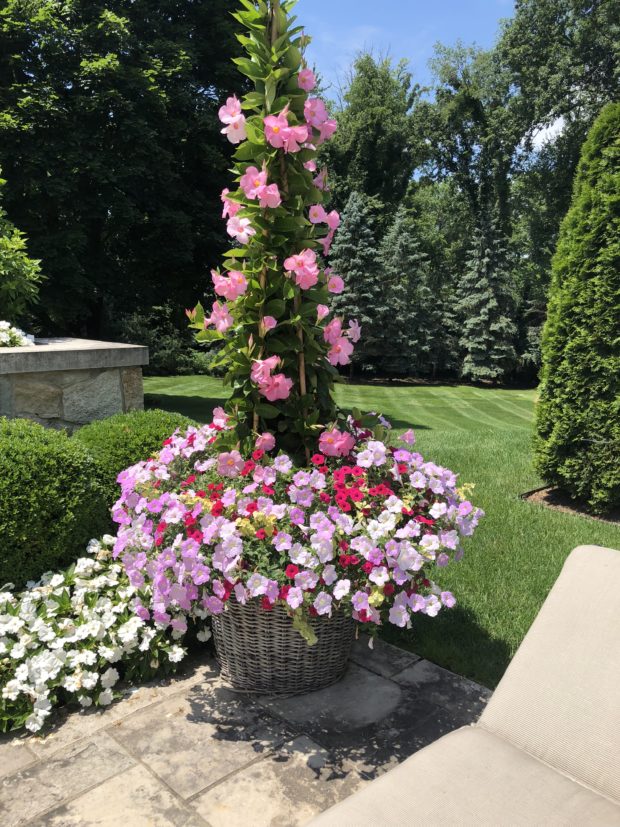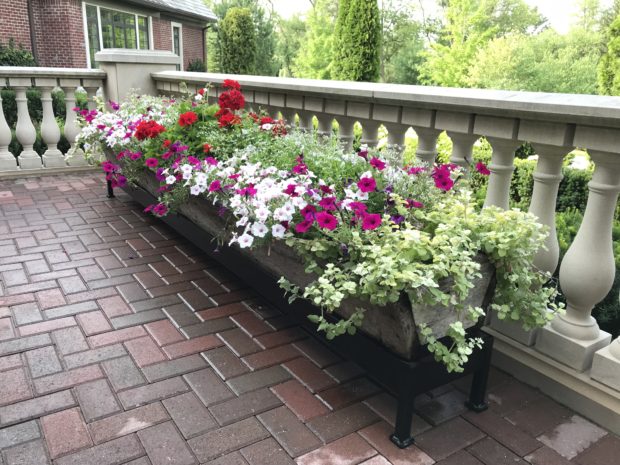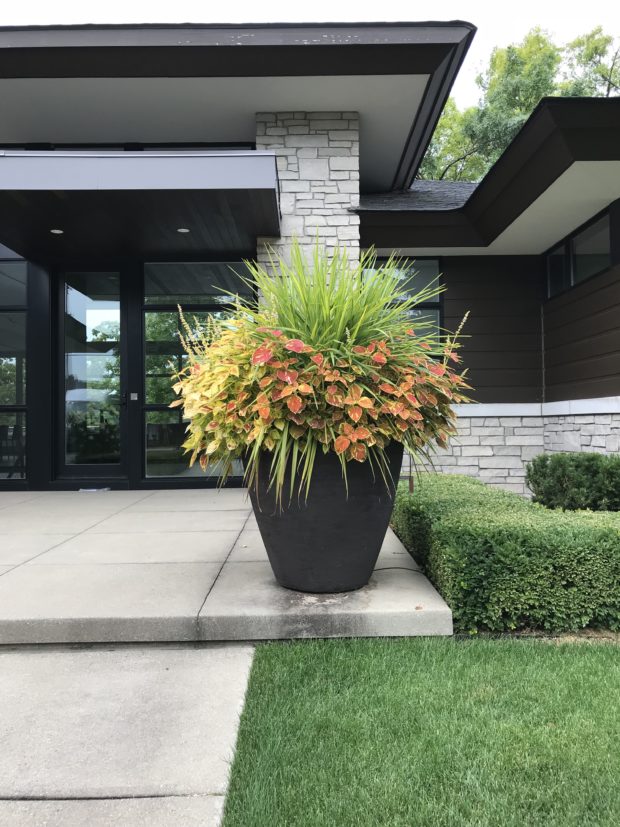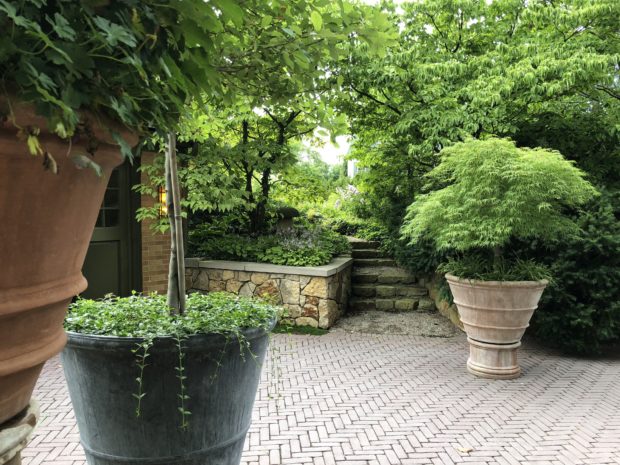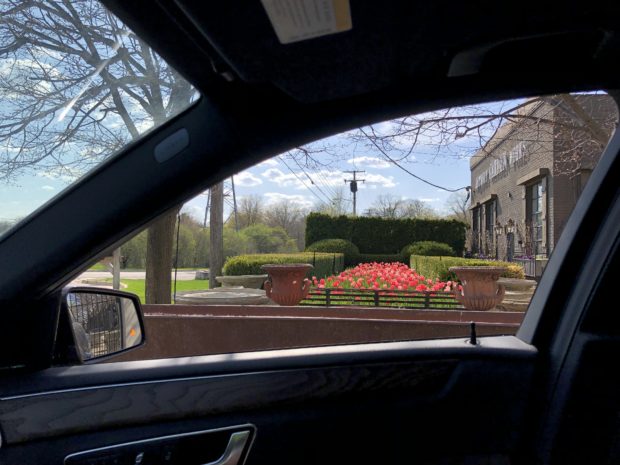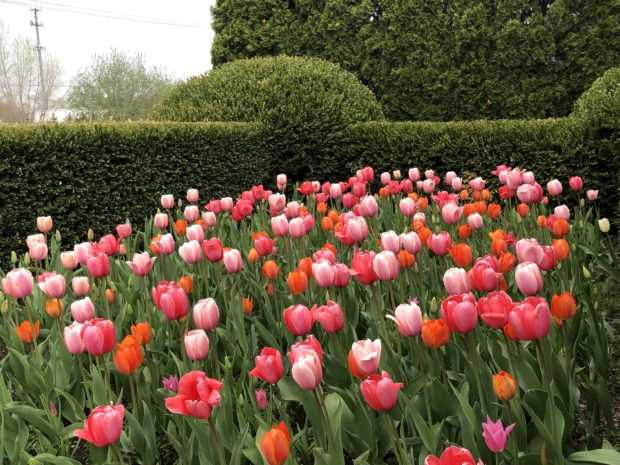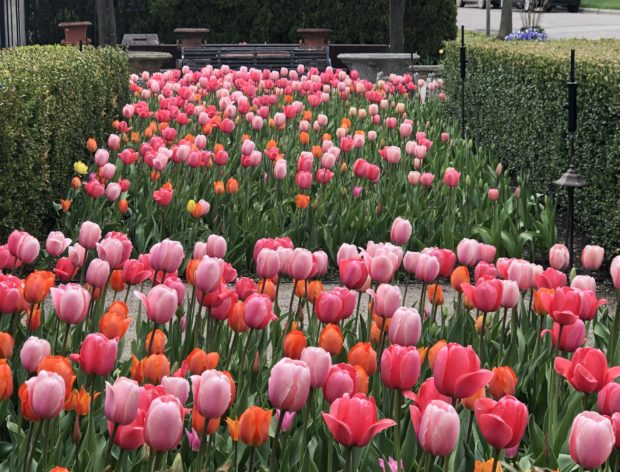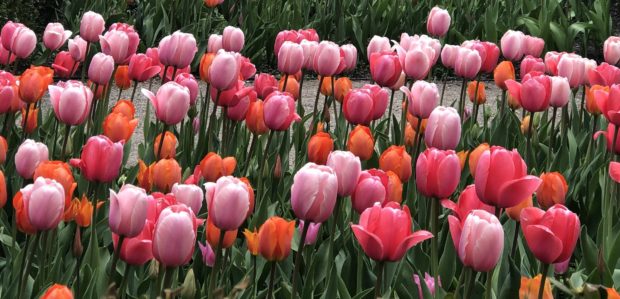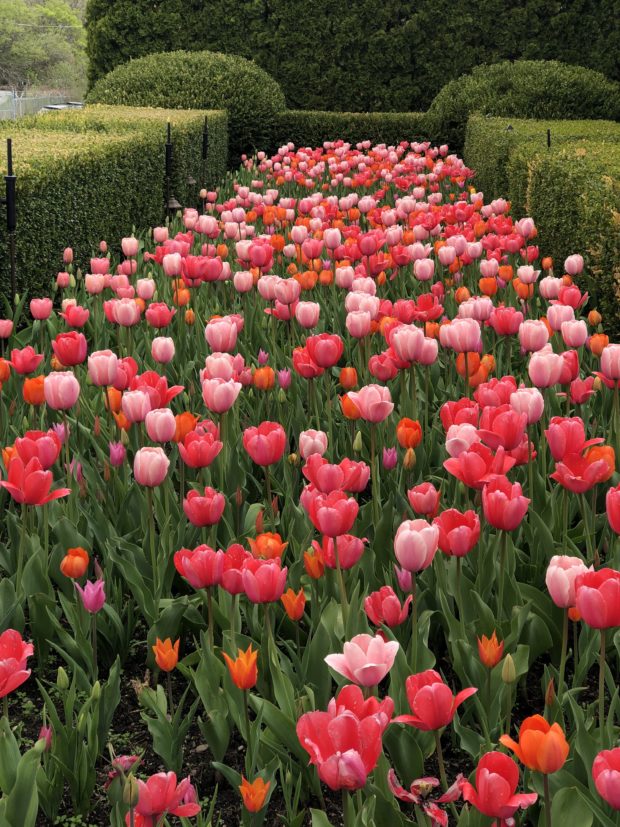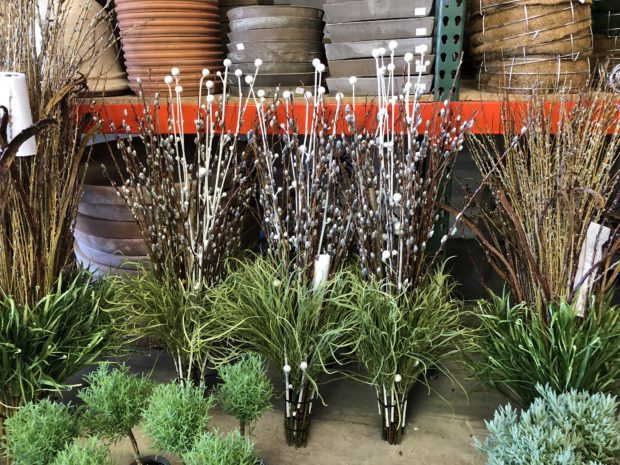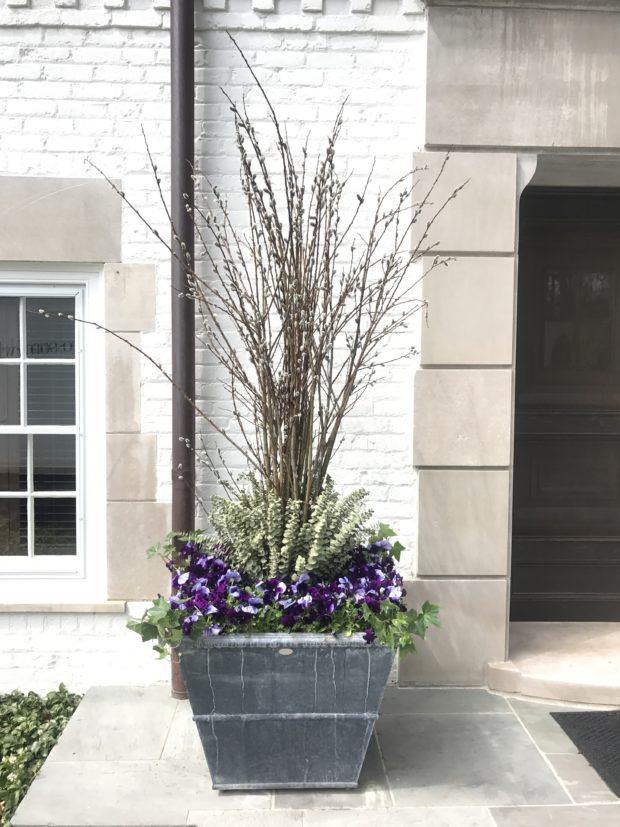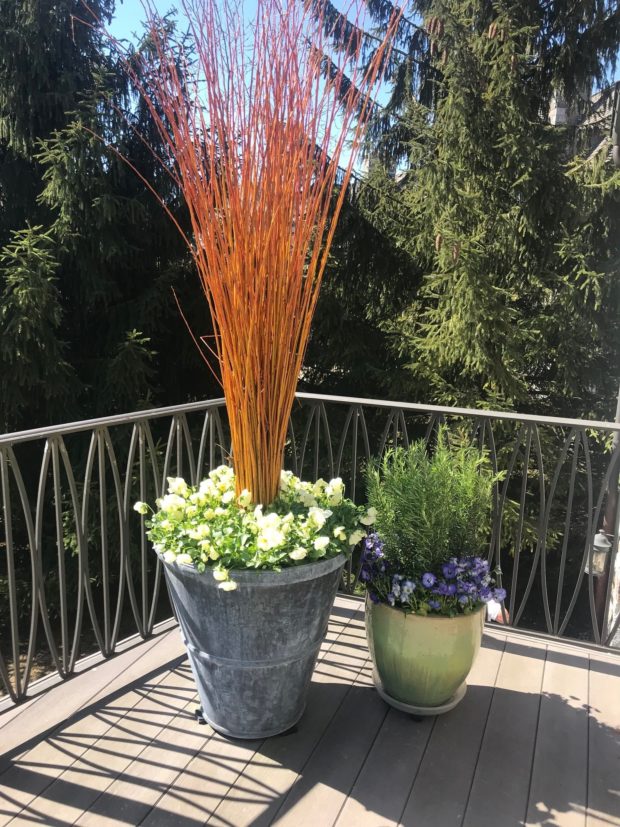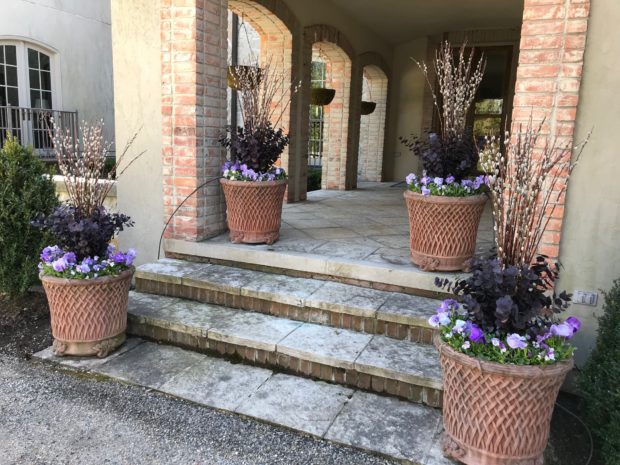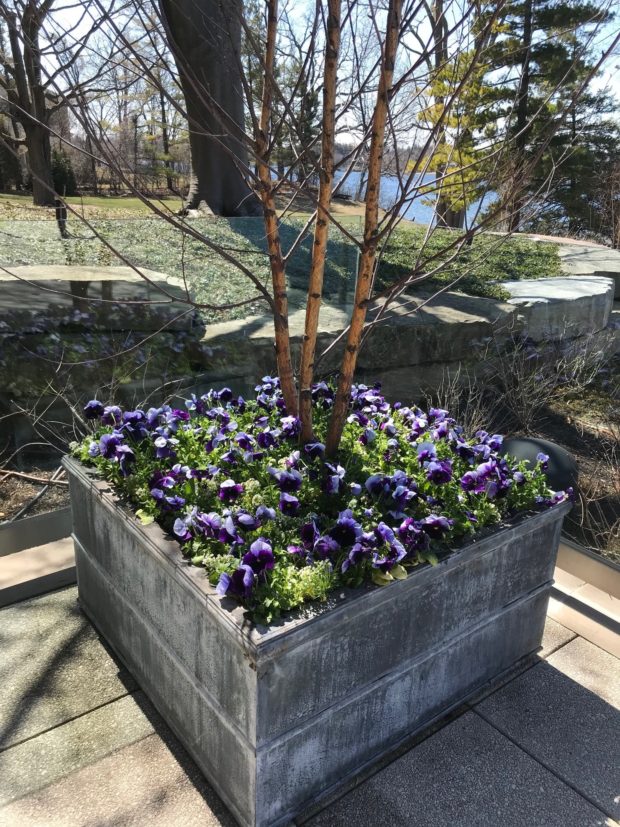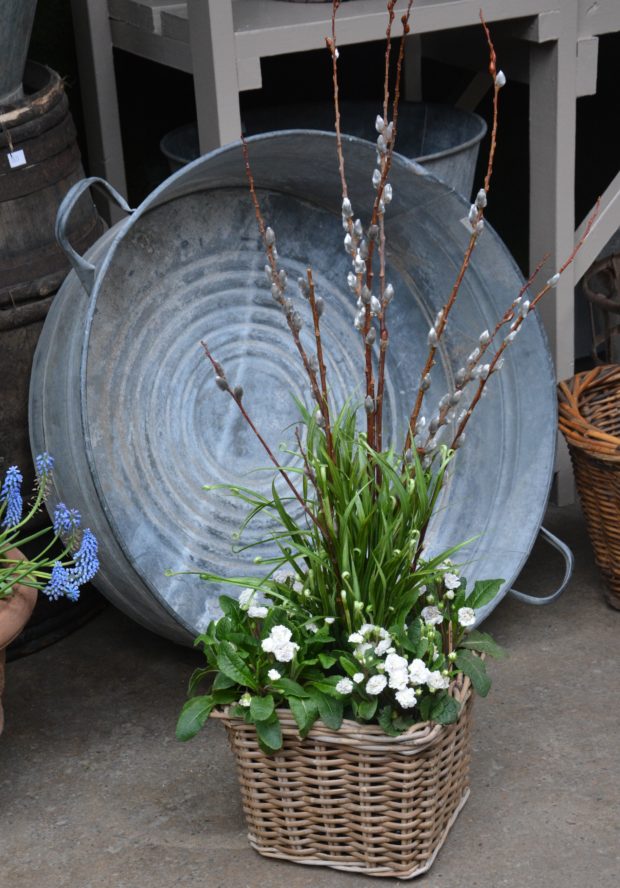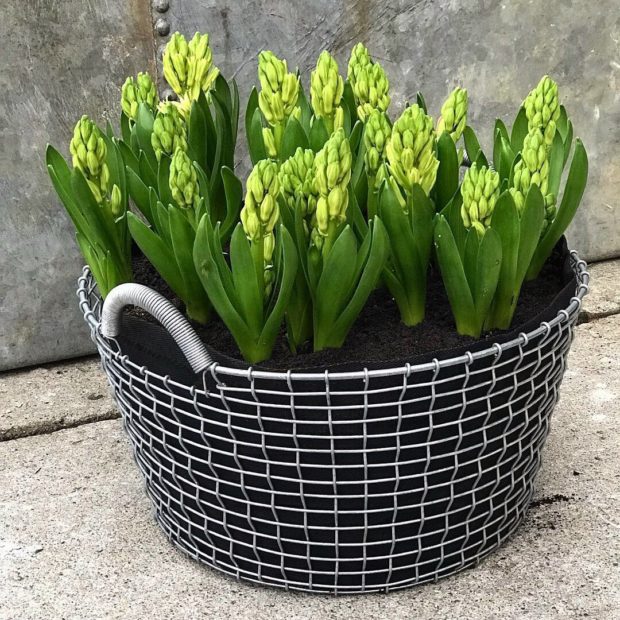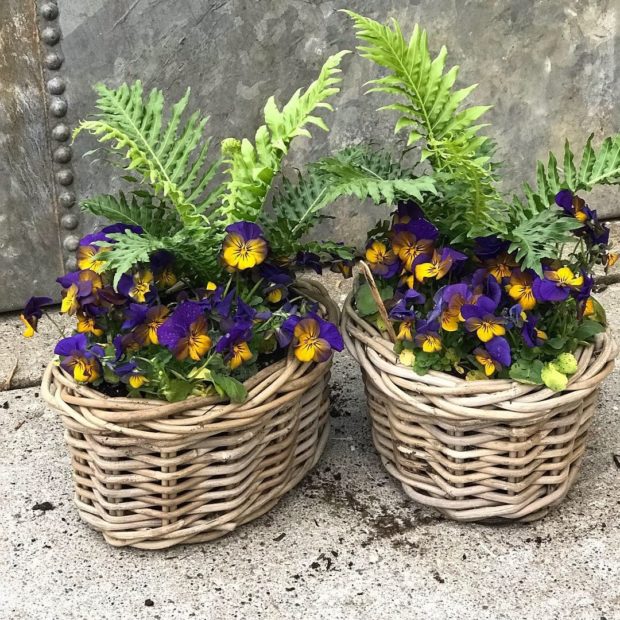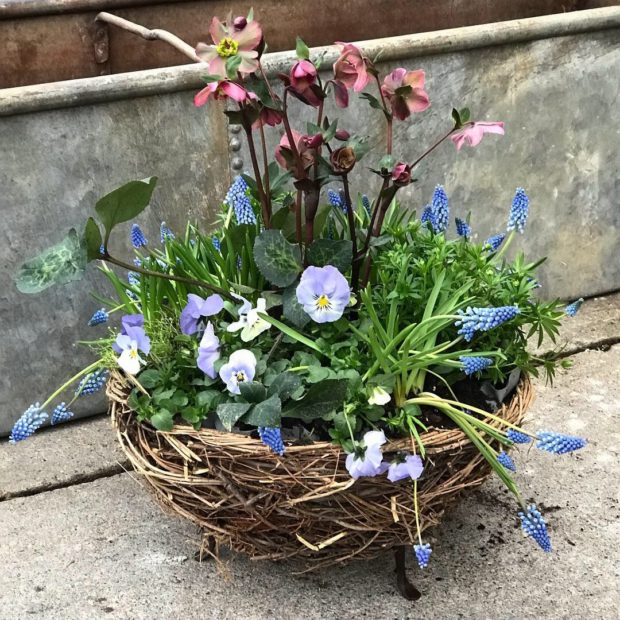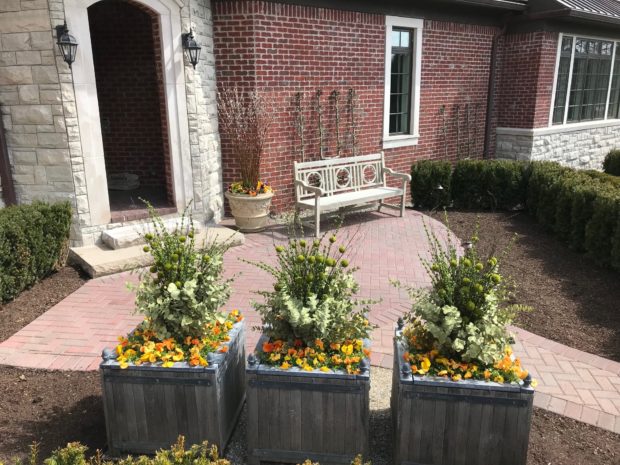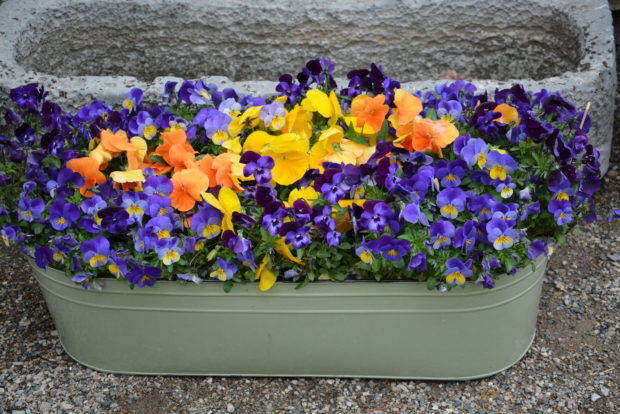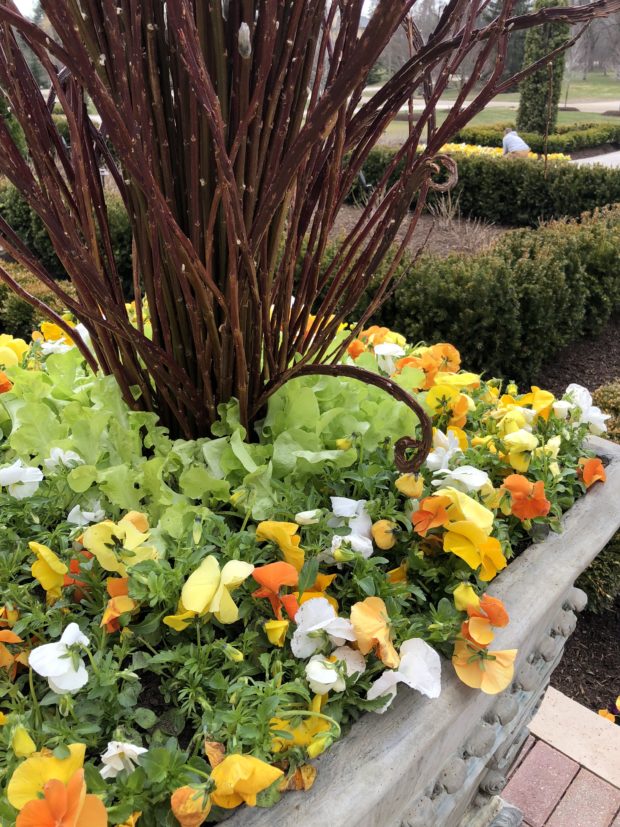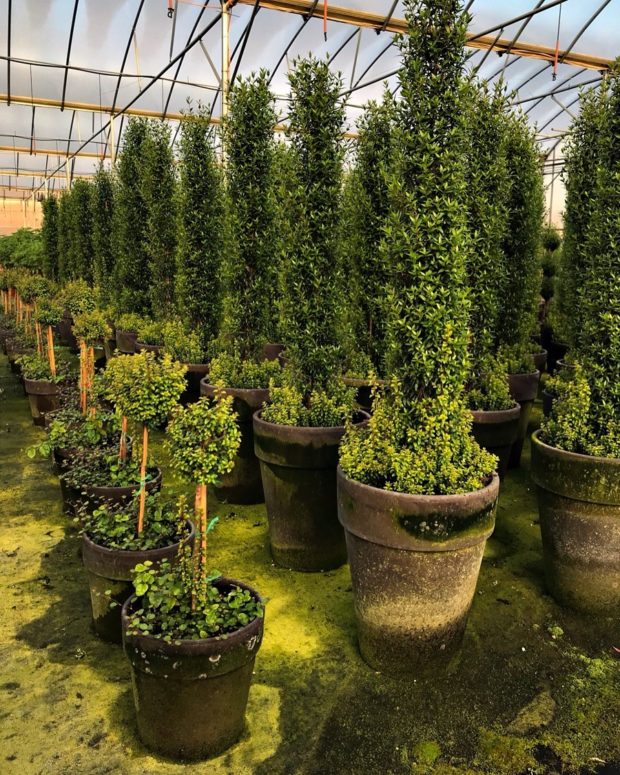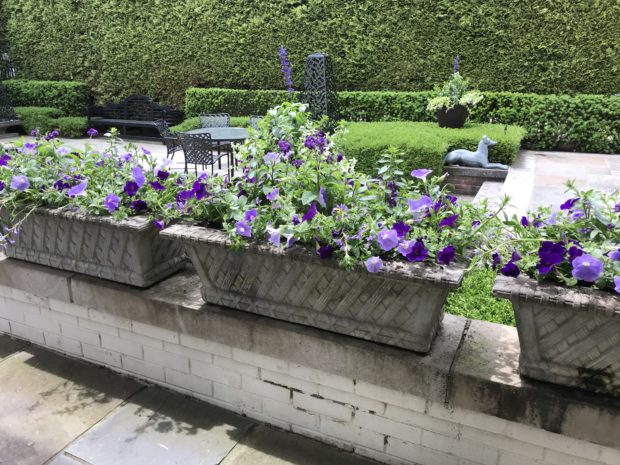 We have been planting container projects daily, one after another, since May 15. With time outs for cold, and torrential rain. I do not ever remember a season quite like this one. Very cold night temperatures, cloudy skies and relentless rains have been the order of the day. A client remarked that we have had rain for 65 days of our last 90. That is an astonishing statistic. It has meant constant interruptions to our work schedule. Cold nights have meant we are hesitant to put temperature sensitive tropical outdoors. The gray skies mean plants have been slow to come on in the greenhouse.
We have been planting container projects daily, one after another, since May 15. With time outs for cold, and torrential rain. I do not ever remember a season quite like this one. Very cold night temperatures, cloudy skies and relentless rains have been the order of the day. A client remarked that we have had rain for 65 days of our last 90. That is an astonishing statistic. It has meant constant interruptions to our work schedule. Cold nights have meant we are hesitant to put temperature sensitive tropical outdoors. The gray skies mean plants have been slow to come on in the greenhouse.
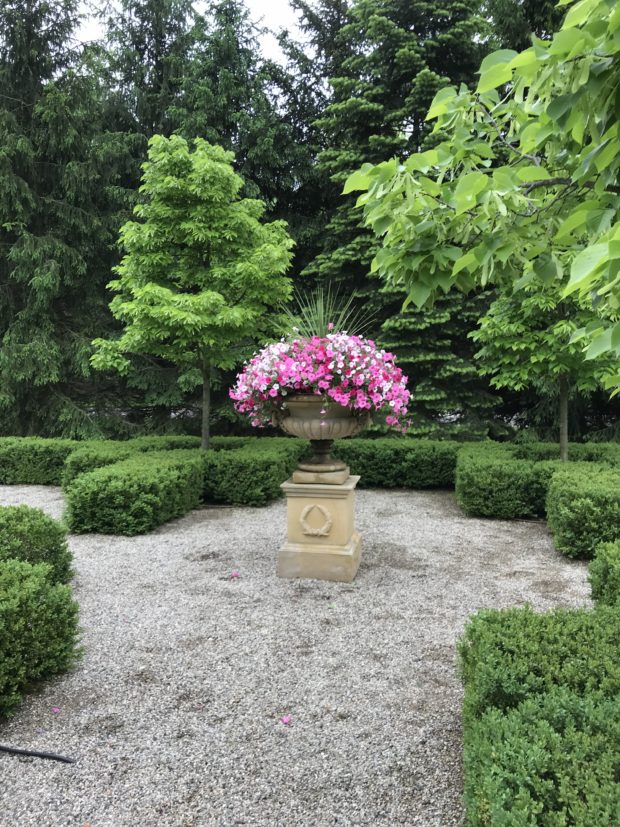 I explained the situation to one client as a discussion about what constitutes providing a good home for a plant. A home is a warm, friendly and inviting place. Home for tropical plants far away from their native home means we wait for weather and soil temperature that approximates the conditions under which they thrive. Many of my clients for whom I plant begonias, coleus and New Guinea impatiens have had to wait. Who doesn’t hate to wait? My suggestion is that their plants are thriving and growing in storage in a greenhouse. Planted out in their pots in cold weather, they would languish. The temperature this morning June 11 at 5am, 48 degrees.
I explained the situation to one client as a discussion about what constitutes providing a good home for a plant. A home is a warm, friendly and inviting place. Home for tropical plants far away from their native home means we wait for weather and soil temperature that approximates the conditions under which they thrive. Many of my clients for whom I plant begonias, coleus and New Guinea impatiens have had to wait. Who doesn’t hate to wait? My suggestion is that their plants are thriving and growing in storage in a greenhouse. Planted out in their pots in cold weather, they would languish. The temperature this morning June 11 at 5am, 48 degrees.
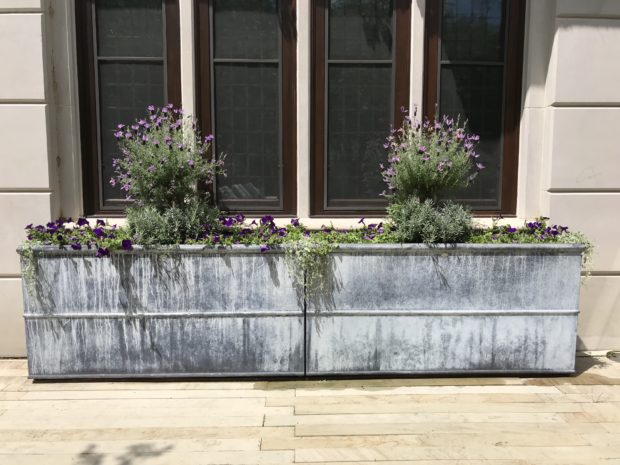 The cold has not been the only issue. Rain is essential to plant life. I doubt I need discuss that with any of you. Rainy weather working its foggy magic on a landscape is beautiful. A rainy day encourages introspection. Or at the very least a nap. I love the rain in all of its spirited and benign forms. But we have had rain day after day without much respite. This is rain of a different sort. Too much rain foments rot both above and below ground. Too much rain spoils blooms. Too much rain dampens the spirit. We have had all of the aforementioned. The most dramatic signs of distress have come from the mandevilleas. These vining plants like hot weather and dry conditions. They look beautiful in the greenhouse, and poor to middling outdoors. It is tough for plants to settle in and thrive when their medium is watery. And more watery.
The cold has not been the only issue. Rain is essential to plant life. I doubt I need discuss that with any of you. Rainy weather working its foggy magic on a landscape is beautiful. A rainy day encourages introspection. Or at the very least a nap. I love the rain in all of its spirited and benign forms. But we have had rain day after day without much respite. This is rain of a different sort. Too much rain foments rot both above and below ground. Too much rain spoils blooms. Too much rain dampens the spirit. We have had all of the aforementioned. The most dramatic signs of distress have come from the mandevilleas. These vining plants like hot weather and dry conditions. They look beautiful in the greenhouse, and poor to middling outdoors. It is tough for plants to settle in and thrive when their medium is watery. And more watery.
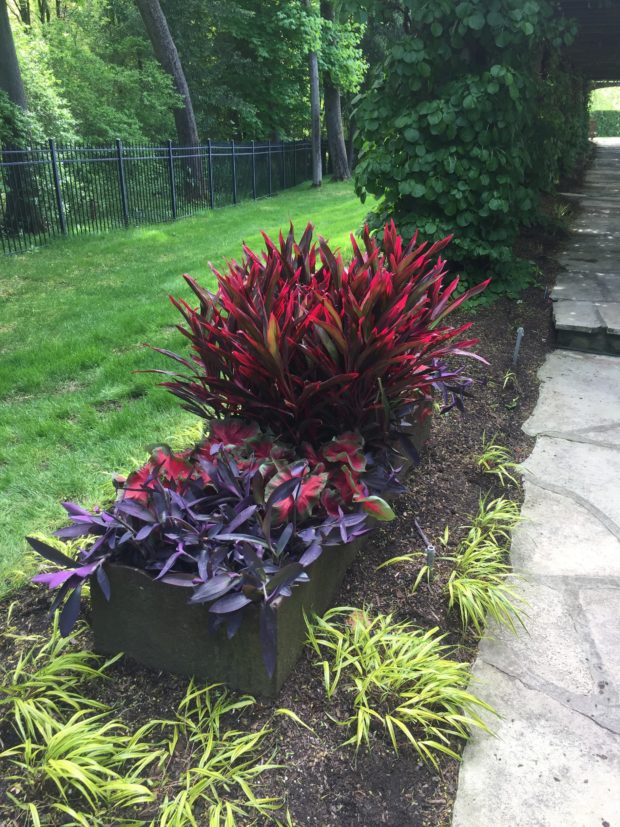 All of our rainy days have been attended by clouds. Naturally. Growth in annual plants is directly related to sunny circumstances. This means we have been planting smaller plants than usual, in those moments between the rains, in the cold. Am I worried? Not so much. Warmer and drier weather will come our way sooner or later. All of those container plantings will need some time to grow before the design and intent is clear. I have time for that, in my more rational moments. The day a container is planted is its first day – not its best day. The best days are months ahead.
All of our rainy days have been attended by clouds. Naturally. Growth in annual plants is directly related to sunny circumstances. This means we have been planting smaller plants than usual, in those moments between the rains, in the cold. Am I worried? Not so much. Warmer and drier weather will come our way sooner or later. All of those container plantings will need some time to grow before the design and intent is clear. I have time for that, in my more rational moments. The day a container is planted is its first day – not its best day. The best days are months ahead.
 Postponing a planting can be the best strategy when conditions are hostile. This year’s conditions are obviously hostile. But in general, I do most of this planting in late May and June. May is a spring month in my zone. What looks good are the spring flowering bulbs, the wildflowers, and those shrubs and trees that thrive and bloom in cooler weather. The Venus dogwoods are glorious right now. The geraniums, not so much.
Postponing a planting can be the best strategy when conditions are hostile. This year’s conditions are obviously hostile. But in general, I do most of this planting in late May and June. May is a spring month in my zone. What looks good are the spring flowering bulbs, the wildflowers, and those shrubs and trees that thrive and bloom in cooler weather. The Venus dogwoods are glorious right now. The geraniums, not so much.
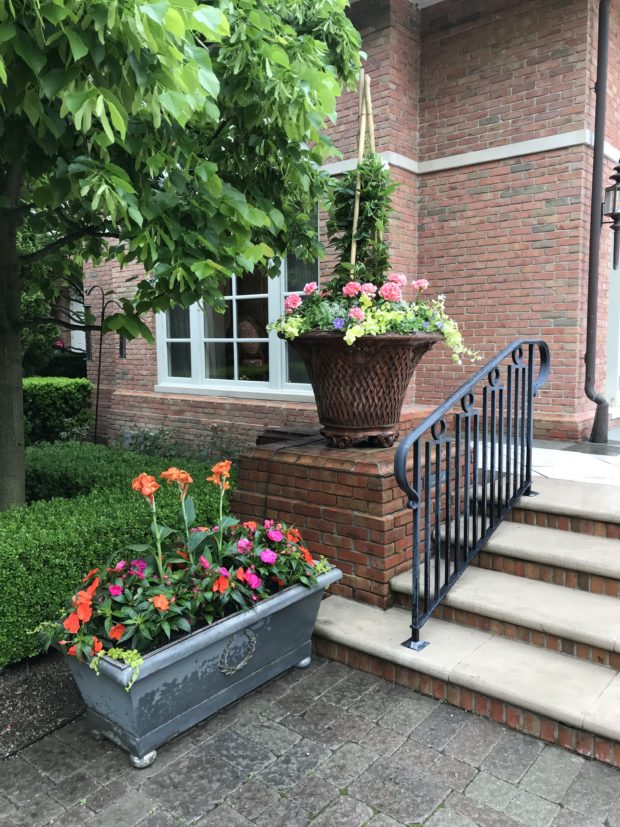 One way to deal with lost time is to plant larger plants. 6″ pots instead of 4″. Hanging baskets in lieu of 6″ or 8″ pots. Growing summer blooming annuals from seed or cuttings is a lengthy process. That is why growers have greenhouses, and grow under glass. Many of the most cutting edge of those houses have very sophisticated lighting and watering devices. If warm weather, reasonable water and sun were not necessary to grow on tropical plants, growers would grow outdoors. That said, every greenhouse where I shop has run out of or are low on plant materials that I customarily use all the way through June.
One way to deal with lost time is to plant larger plants. 6″ pots instead of 4″. Hanging baskets in lieu of 6″ or 8″ pots. Growing summer blooming annuals from seed or cuttings is a lengthy process. That is why growers have greenhouses, and grow under glass. Many of the most cutting edge of those houses have very sophisticated lighting and watering devices. If warm weather, reasonable water and sun were not necessary to grow on tropical plants, growers would grow outdoors. That said, every greenhouse where I shop has run out of or are low on plant materials that I customarily use all the way through June.
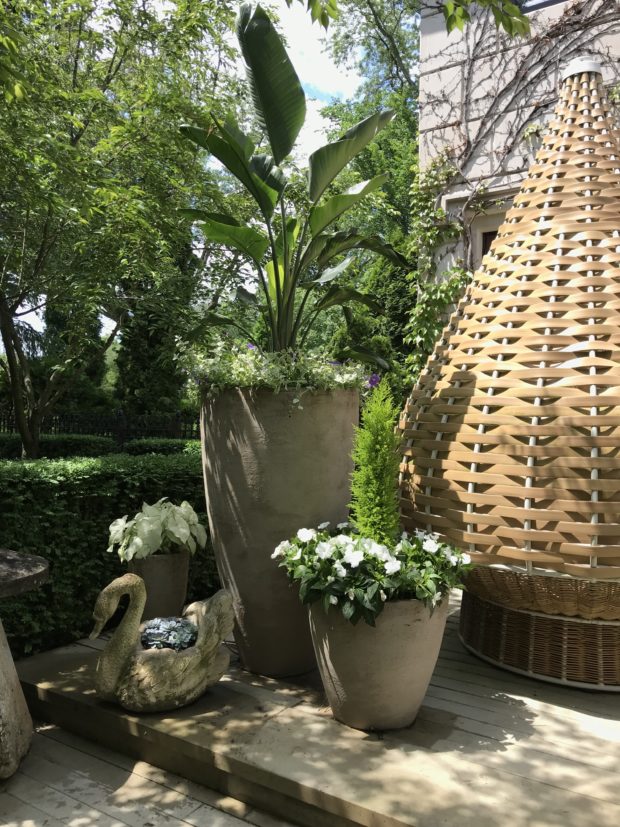 We have a solid 2 weeks of planting still to go. Just like the weather, we are just getting warmed up.
We have a solid 2 weeks of planting still to go. Just like the weather, we are just getting warmed up.
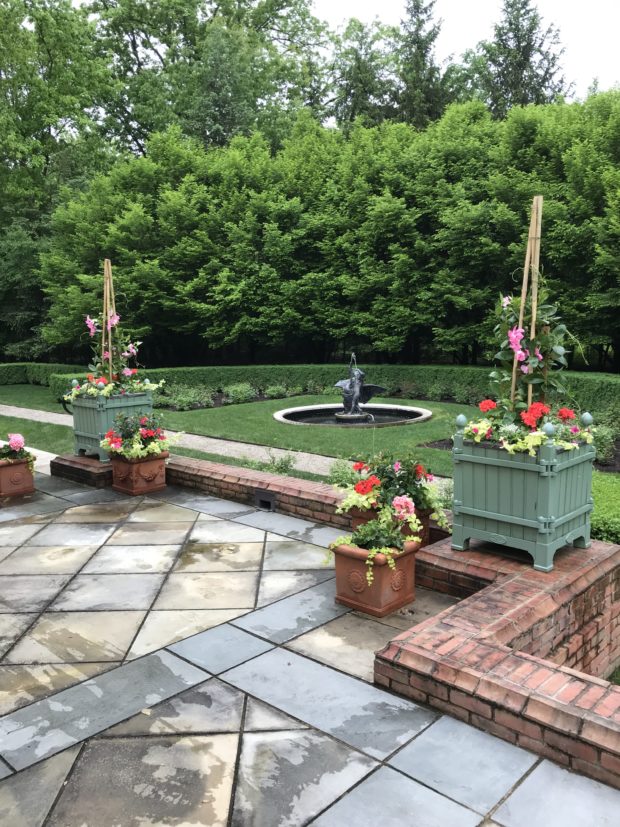 I would not want to do without container plantings, whatever the weather.
I would not want to do without container plantings, whatever the weather.




